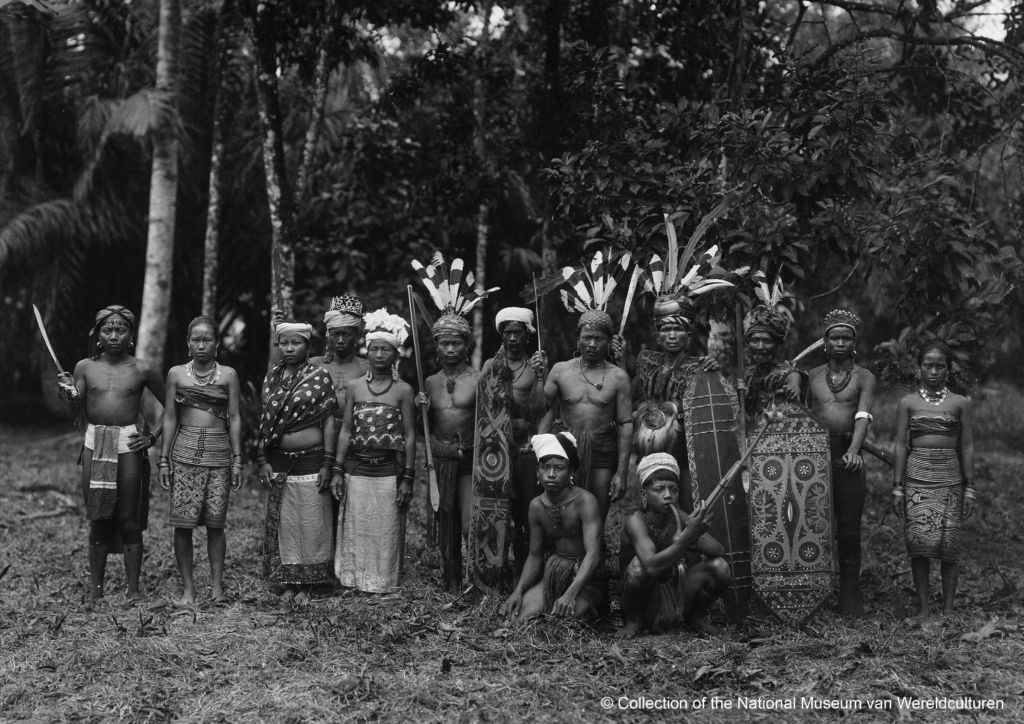The exhibition is dedicated to the subject of “head-hunting. Head-hunting refers to the killing of a person with the intention of taking his head.
Head-hunting is an ancient tradition which was earlier practised widely in almost all of Asia and Europe. For the pre-Christian and pre-Roman peoples of Europe (Celts, Teutons, Scythians, Italics/Ligurians, Iberians, etc.) headhunting has been widely testified and proven to have existed, both by classical authors and archaeology. In some parts of the world, such as some areas of Southeast Asia, Africa, New Guinea and Latin America, headhunting has persisted for a very long time for a number of reasons (remoteness, ongoing tribal feuds, external pressures/migrations resulting in conflicts) and only finally became obsolete in the early 20th century. But then it had ceased to have its original social and religious basis and was mostly only one facet of violent acts in the context of ethnic conflicts.
Important: headhunting must not be equated with excesses of violence (ISIS, mercenaries in Somalia, Belgian Congo, ethnic conflicts in Indonesia etc.) and the taking of trophies in the course of military actions! The „collecting“ of severed heads has nothing to do with head hunting in the context of this exhibition, but is only a human perversion without cosmological background!
The „real“ head-hunting still occurred widely and sporadically into the 20th century in the greater area of South and Southeast Asia in the regions of Taiwan/Formosa, Northern Philippines (Luzon), in the Naga countries in the north-eastern border area of India (India / Myanmar/Burma / Bangladesh border areas), and in Indonesia (Borneo, Sulawesi, Nias, Moluccas).
Headhunting is a socio-religious act. Its purpose is the direct intervention in the cycle of life. It is thought that every human being has a certain life potential, which ends with death (naturally or through misfortune/illness) determined by force majeure. But if life is ended intentionally, this life energy, which is then quasi „released“, can be tapped for one´s own community. That is why head hunting is never done in one’s own community, but always externally. The visible proof of the killing of a human being is the head, since it is the carrier of the life essence (of character, life soul, personality). The transfer of the life-force thus taken, into one’s own community, in the context of rituals, is always seen as a blessing (fertility of humans, animals and plants), which is brought by this new, external life. It is also essential for procreation, since it is assumed that one’s own life force is only sufficient for oneself and that an additional source must be opened up for the procreation of new life. However, the soul power of the victim must be purified or „neutralized and freed from any attachment to the original owner. Therefore, it has to wander into the hereafter and be fetched back from there again. This transmigration and transformation of souls is basically the same process that everyone knows (birth/sexual maturity/death), therefore the warrior and head-hunter is quasi the forerunner of these processes which are essential for all life. He intervenes directly in the cycle of life.
As masters of the „underworld“, the earth deities (mythical creatures that carry the world) are usually the first recipients of the souls that are released during head hunting. This is because they embody the earth, which transforms everything and from which everything grows. Therefore, they are often the main motive of the art of the „head-hunters“. The term „head-hunting“ is misleading because it is not a matter of hunting/gathering, but of the taking of life, which is merely evidenced and made visible by the head and rededicated in ritual. For this reason, head hunting is only common among planters/farmers who live from what the earth produces. It is assumed that one can intervene in the growth and distribution of life and „feed“ the earth. Life is regarded as quantitative and as changeable and renewable, and its distribution can be influenced. This is why head hunting is particularly necessary when important people have died, since this represents a loss of life force from the community. For this reason, it is carried out before weddings with the desire of being blessed by offspring and also before sowing. However, the ritual in itself is often sufficient. Often the rituals of a head-hunt are performed with old skulls or even coconuts. In general, head-hunting claimed few lives (compared to European wars) and was subject to very strict rules.
Head hunting is explained by myths which describe how the first head was won by a divine being and how this had a positive effect on the world. It is also said that birth and renewal as well as growth only became possible through the first death (which is in fact true). So the head hunter is the revivor of what was originally a divine act.
This applies unreservedly to Central Borneo, Sulawesi and the Moluccas; on Formosa, Nias and among the Naga and the Dayak of Malay-Borneo (Sarawak), head-hunting has additionally taken on the component of deterring enemies, of individual and collective release of aggression as well as identification with their image of themselves as terrifying warriors. The mythically founded „depth“ of the concept of head-hunting or life rededication had faded somewhat here because of the many regional conflicts and European interference.
Head-hunters still active until about 1900 – 1920 (the Naga even until the 60s), represented in the exhibition:
Dayak – Borneo
Ono Niha – Nias
Alfuren – The Moluccas
Toraja- Sulawesi
Paiwan, Rukai, Atayal – Formosa
Igorot/Ilonggot – Luzon, North Philippines
All Naga, except for the Kuki-Ao-Naga (of which nothing is on display)
Naga

Dayak


Hinterlasse einen Kommentar